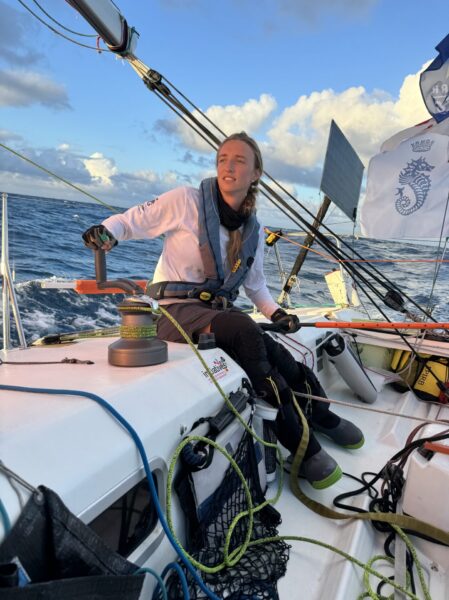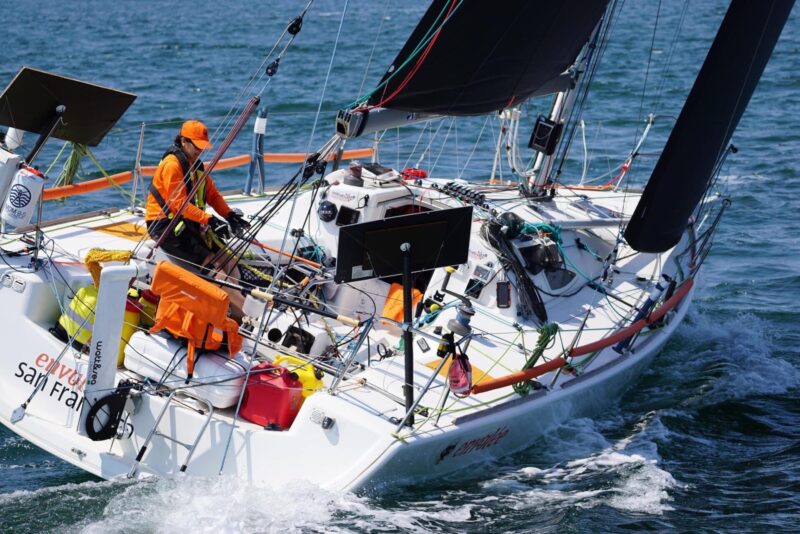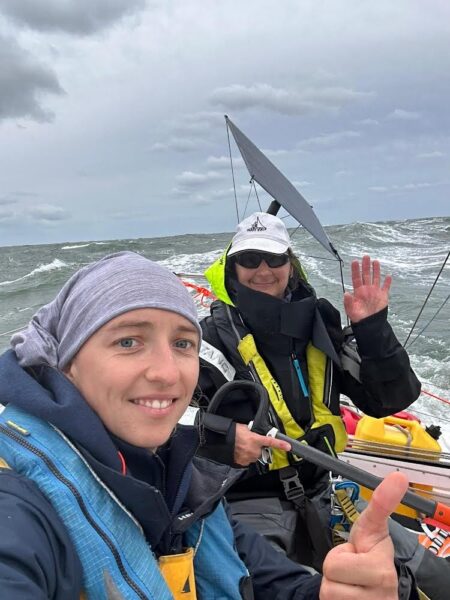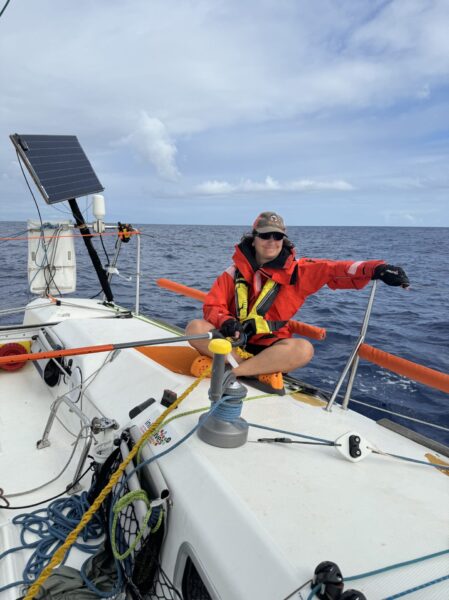
San Francisco Sailors Doublehand 15th Caribbean 600 Race
Skipper Nathalie Criou and co-skipper Bérénice Charrez, two San Francisco Bay sailors and friends of Latitude 38, met up in Antigua for the Caribbean 600 last week. According to the Royal Ocean Racing Club, organizing the 15th race edition in collaboration with Antigua Yacht Club, Envolée was the smallest boat in the race and one of only two doublehanded boats to finish.
Since the first edition of the race in 2009, the race around 11 of the Leeward Islands in the Caribbean has evolved into one of the world’s most navigationally challenging of the 600-milers. The course starts at Fort Charlotte in English Harbour, Antigua, and heads north as far as Saint Martin, and south to Les Saintes off Guadeloupe, taking in Barbuda, Nevis, St. Kitts, Saba and St. Barth.

Most years, the Caribbean enjoys steady trade winds between 15 and 25 knots, and the occasional squall at night. Instead, our competitors had weak trades and a period of no wind in the forecast.
As Charrez is quick to note, about 500 of the 600 miles were upwind for the doublehanded team. “We probably sailed 1200 miles upwind if you count the tacks,” Charrez jokes. “Most of the time the sea state was pretty rough — the boat constantly heeled at [a] 25° angle, everything inside is moving with the waves slamming, and it’s hard to sleep in these conditions.”
Charrez and Criou have sailed together in San Francisco Bay, where Envolée rests in her home port at South Beach Harbor. Criou is a USCG-certified captain, and does deliveries, six-pack charters, and myriad other local sailing activities when she isn’t racing Envolée or working her full-time career in tech.
“Envolée is a Figaro 2, essentially a 33-ft offshore racing machine that used to be the support for professional solo racers in Europe,” Criou explains. “It’s a very robust little boat but it has no toilet on board, which apparently is a major deterrent!”

We wrote about Charrez’s adventures in the Volvo Ocean Race last June. Now she has set her sights on new goals — bringing tech to the extreme sport of offshore sailing. “Nathalie and I were both wearing some wearable sensors on our bodies underway, to monitor certain aspects of our physiology before, during and after the sail,” Charrez explains. As a professional sailor with a PhD in bioengineering and biomedical engineering from the University of California, Berkeley, she’s always been curious about the physical effects of the extreme environment offshore racers endure.
For the Caribbean 600 race, Charrez partnered with the University of Caen, which provided funding to conduct pre-sail and post-sail evaluations of other competing sailors who volunteered to participate in this groundbreaking scientific inquiry. Charrez had the participation of some badass sailing women like Dee Caffari, Marie Riou, Deborah Blair, and Elodie Mettraux, doing exercises and taking measurements on the docks in Antigua before the race began, and again after the race.


As Charrez reported, some of her wearable sensors worked out really well, and some didn’t at all. “Thanks to the sensors we had strapped to pretty much every bit of skin or bodily system, we could see that all this mental concentration and physical effort cost us between six and seven thousand calories a day,” Criou says. “And this is for a LIGHT-AIR race!”Of the successful monitors, the BodyCAP and glucose monitors delivered some interesting preliminary data. The BodyCAPs are capsules you swallow that monitor internal heat. They stay in your body 1-2 days before you pass them and take another capsule. Charrez said you really don’t feel anything, but they provide continuous data measuring your internal temperature to give insights to the body’s circadian rhythm.
Also interesting were the data from the glucose monitors that Charrez and Criou put on before departure — it just took a quick jab of a small needle inside the plastic housing to insert the sensor which stayed on their arm for the duration of the Caribbean 600 race. It showed some interesting results concerning the relationship between blood glucose spikes and stress, eating, and resting.
It will be interesting to see if the collected data lead to tips and tricks to help sailors with their ocean racing endurance, and perhaps their race results – stay tuned for more updates.

Congratulations friends!!! Nathalie – Berenice – Cole… The Dream Team!